
views
- In the Vastu Shastra tradition, a west-facing home is said to bring prosperity and wealth when it’s designed according to Vastu principles.
- West-facing houses receive natural light during sunset and stay cool most of the day. The east-facing backyard is sunny in the morning and afternoon.
- Some believe west-facing homes are bad luck since north and east are more popular, but any direction can be equally as auspicious when designed well.
West-Facing Home Pros

In Vastu Shastra, a west-facing home brings prosperity and luck. West-facing houses have an unfair reputation for being bad luck since their main doors don’t face the preferred directions of north or east. However, these westerly homes come with their own unique advantages in traditional Indian architectural beliefs: West-facing homes are governed by Lord Varun, the controller of the universe and glory. This makes the west an auspicious direction for wealth and prosperity. Living in a west-facing house is said to make you more social and extroverted, which is helpful in business or finance interactions. Children are said to have more energy and positivity in west-facing houses.

West-facing windows and rooms receive beautiful sunlight during sunset. If you enjoy the last glimmers of daylight pouring through the front windows of your home, a west-facing house may be for you. Additionally, your backyard (which faces the east) will be lit up by the sunrise and bathed in light for the majority of the day, meaning you can do yard work, relax, or even hang laundry out to dry in natural light. The front rooms of west-facing houses cool down quickly after sunset and stay that way until mid-afternoon when the sun begins setting. Because the front of your home will receive less light during the day, use lamps, candles, or other artificial lights to illuminate these spaces.
West-Facing Home Cons
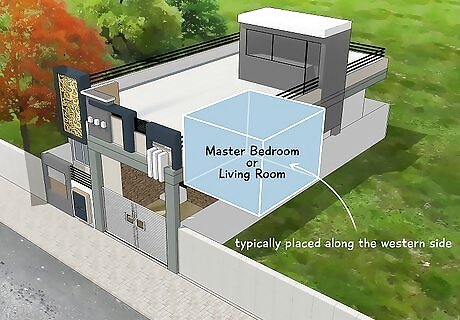
The layouts of west-facing houses present some Vastu design issues. Generally, homes following Vastu Shastra guidelines have a long axis running north-south rather than east-west, which might present some layout problems when determining where to place each room. Additionally, a west-facing front door may be difficult to place since important rooms like the master bedroom and living room are typically placed along the western side of the house.
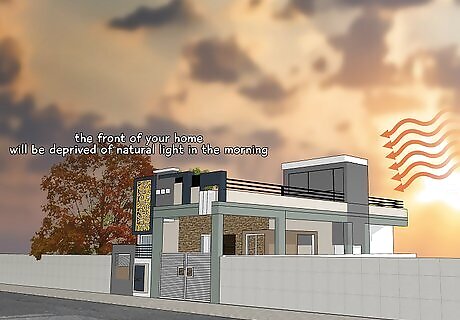
West-facing rooms may cost more to heat in the colder months. The rooms at the front of your home—namely the bedrooms, living room, and bathroom in the Vastu tradition—will be deprived of natural light in the morning and part of the afternoon. This means they won’t benefit from the sun’s natural warmth, potentially driving your heating bill up in the winter. You may need to place space heaters in chilly rooms or near windows to the west (and keep some throw blankets on hand). However, in hot climates or during intense summers, west-facing houses may heat up a lot in the afternoons because of the sun’s path across the sky, leading to higher cooling costs.
Preferred Layout for West-Facing Houses

Main entrance or front door According to Vastu, the main door of a west-facing home is most auspicious on the west side of the house in the middle of the wall or slightly to the north, since having the door to the south of the middle is considered bad luck. The 5th or 6th padas (divisions of the wall into 9 equal parts) are considered the best for the front door—if you’re designing your home, place your door here for the best energy flow into your house. In Vastu Shastra, each side of the home is divided into 9 equal segments called padas. On the west side, the door is most prosperous in the middle padas (padas 3 through 6). If the door can’t be in the middle, the north (padas 1 or 2) is the next best place. Steer clear of homes with the front door on padas 7, 8, and 9, since the southwest corner is considered the corner of the devil’s energy.
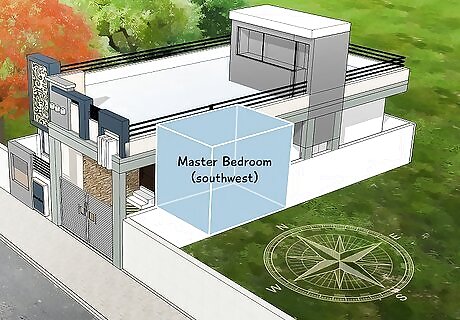
Master bedroom The main bedroom of a west-facing house is best situated in the southwest corner of the home. It’s said that a bedroom in this corner helps couples improve their relationship and prevent or work through conflicts. In a multi-level home, plan to have the master bedroom on the top floor.
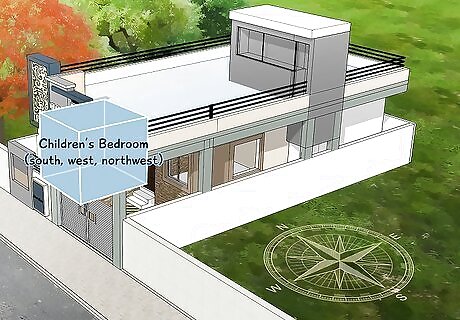
Children’s bedrooms To foster the growth and well-being of the children of the household, place their bedrooms in the south, west, or northwest portions of the home. These directions are said to aid the flow of positive energy through the home and provide a nurturing environment for kids. Similarly, the best places for a guest bedroom include the south, west, or northwest portions of the house.

Living room When designing or building a home, the main living area or living room of the house does best in the east, north, northeast, or northwest of the house. To best aid the flow and balance of energy in this space, arrange most of your furniture or large decor items in the west or southwest portions of the room.
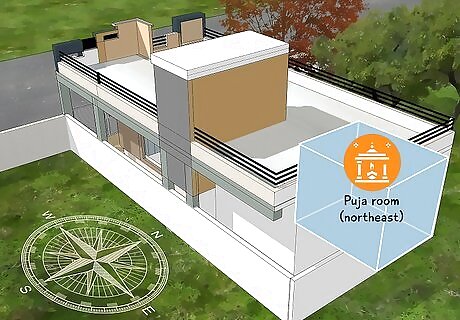
Puja (temple) room The puja room is an important worship space that does best in the northeast portion of the house, which is traditionally the most energized area of the home. Arrange your temple and idols to face west so that you face east during worship. If your home is not big enough for a separate puja room, use your northeast living room as a puja and arrange your idols there (making sure they still face to the west).
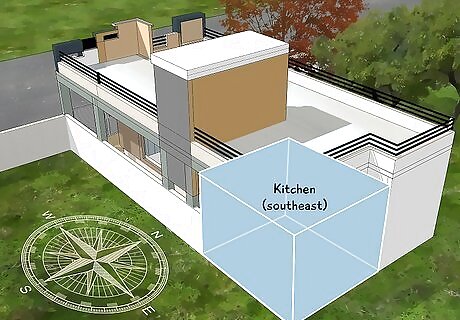
Kitchen According to the vastu tradition, the kitchen is best suited for the southeast portion of the house (and the least suited for the northeast corner). This is because the kitchen represents the element of fire, which flourishes best in this area. It’s also considered auspicious to face east while cooking, so position your countertops and cooking surfaces to face eastward as well. The kitchen must also not be directly over or under the bathroom, puja room, or master bedroom. The kitchen is responsible for the nutrition and health of the family. Putting it in the wrong spot is said to potentially cause financial or health problems. If you can’t place your kitchen in the southeast, the northwest is the second-best location.
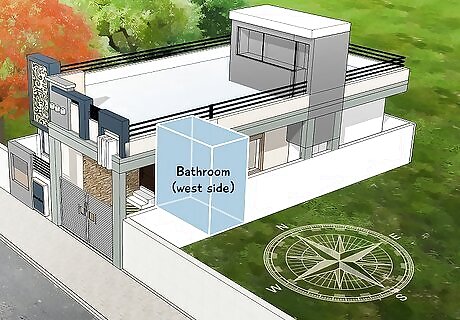
Bathroom The bathroom and toilet are best placed on the west side of the house, and it’s considered bad luck to have the toilet in the northeast of the house. If you’re designing your own home, make sure the bathroom and toilet are neither directly above or below the kitchen. Install water or septic tanks to the west of the house (and not in the northeast). The toilet and bathroom represent negative energy flowing away from the home, so their placement according to Vastu tradition is important for keeping a balance of light and dark energy in the home.
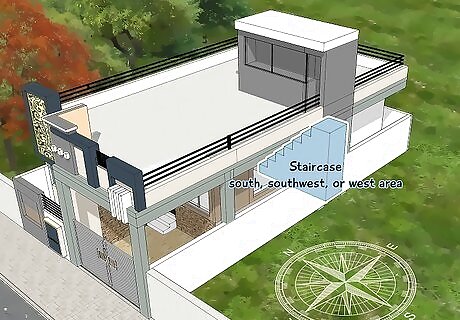
Staircase For the most harmonious energy flow in multi-level homes, look for a west-facing house with the staircase built in the south, southwest, or west area of the house. The stairs will ideally turn in a counterclockwise direction unless they’re located south of southwest (in which case, it’s best if they turn in a clockwise direction).
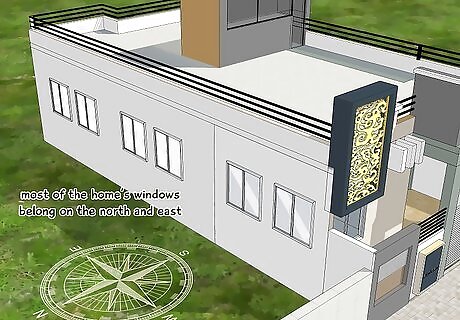
Windows For a balanced energy flow, most of the home’s windows belong on the north and east sides of the house. In total, it’s suggested that the number of windows and doors in the house be even. Not every window must be on the east and north sides, though. It’s suggested to have at least one large window on the west side to take advantage of the sun’s light as it sets in the evening. Try to keep your windows clear of large furniture and remove any clutter in front of them so energy can flow into the house unobstructed.
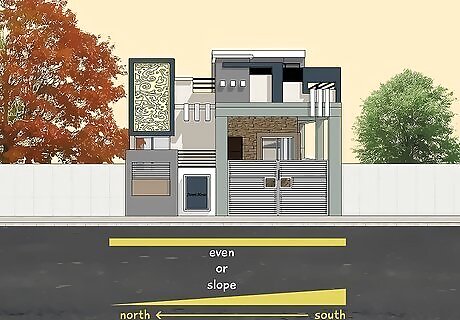
Land plot Ideally, the land the house sits on will be even or slope from the south down to the north. Sloping in the reverse direction (north down to south) is said to impede the flow of positive energy. Additionally, west-facing homes with an extension or add-on to the south or southwest are said to be bad luck. The compound walls (the outer walls of the home) bring prosperity and good luck if they are higher and thicker on the south and west sides than on the east and north sides.
Decor & Color Scheme Suggestions

Choose neutral wall colors like white, silver, yellow, or beige. These colors are ideal for west-facing homes according to Vastu, and their neutral shades are said to enhance positive energy flowing into the home from the west. Other neutrals, like off-white or cream, are also acceptable. If the house is spread out more on the west side compared to other directions, then incorporate some light blue into your walls or decor to increase the benefits of the westerly energy. Steer clear of ultra bright colors like oranges or reds, since these can overwhelm your home.

Try decorating your home and garden with tulips, roses, and daffodils. Plants bring vibrancy and life to your house and yard, but if it’s west-facing, they will receive little sunlight in the mornings and lots of summer heat in the afternoons. Flowers like roses, tulips, and daffodils come in a variety of colors, thrive in the conditions of west-facing gardens or windows, and can mostly be planted in autumn so they come to life in the spring.
Are west-facing houses considered unlucky?
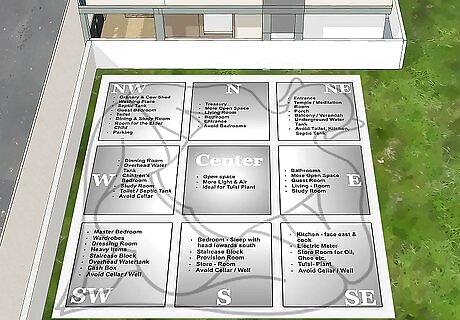
Homes in any direction are auspicious if they follow Vastu principles. North- and east-facing homes are often considered the luckiest and most prosperous—they’re many home buyers’ and builders’ first and second choices. West- and south-facing homes have a more negative reputation in comparison, but can let in just as much positive energy if they’re designed harmoniously. In fact, the west direction is governed by Lord Varun, the Hindu god of glory and destiny, and the direction of southwest is said to encompass purity, cleanliness, and strength.

West-facing homes are auspicious for those with careers that help others. Vastu guides the flow of energy in a home, and people of certain professions or astrological signs can benefit from west-facing energy more than others. These homes are ideal for those who work for fulfillment rather than reward, including lawyers, doctors, nurses, chefs, detectives, financial advisors, teachers, artists, social workers, or gardeners. According to Vedic astrology, certain zodiac signs (Rashi) can also benefit from a west-facing home. These include the Kumbha (Aquarius), Mithuna (Gemini), and Tula (Libra) Rashi.
What is Vastu Shastra?
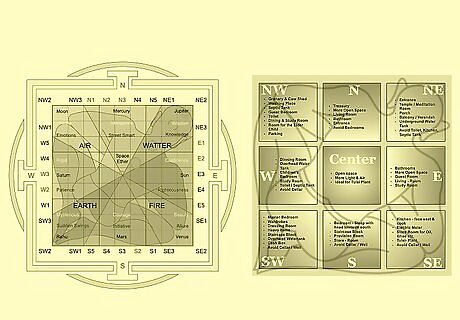
Vastu Shastra is a traditional Indian system of architecture. The style and principles seek to strengthen the spiritual connection between humans and construction to create a prosperous, lucky environment. It uses the 5 elements (earth, air, fire, water, and space), geometry, and the cardinal directions (north, south, east, and west) to design harmonious living spaces that allow positive energy to enter and fill the home. Vastu Shastra means “the science of architecture” in Sanskrit and originated in India during the Vedic period (about 1500–600 B.C.).

















Comments
0 comment